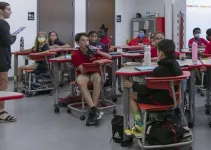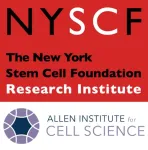(Press-News.org)
A team of researchers has developed a radical new technique for analyzing evidence in sexual assault cases. The new approach could streamline the forensics pipeline and reduce delays in the processing of DNA evidence.
The research is described in a paper published today in the journal Advanced Science.
There are almost half a million sexual assaults in Canada every year with many more going unreported. The new approach could mitigate one of the reasons victims are reluctant to report assaults: the perception that analysis of forensic evidence is too slow.
“For this research, we read reports and surveys that asked victims why they weren’t reporting assaults,” says Mohamed Elsayed. “And the most common answer was that they didn't have confidence in the justice system — and that lack of confidence was partly because of how long the process takes.”
The lead author is Elsayed, who worked on this project as part of his PhD in Biomedical Engineering and who is now a postdoctoral fellow in the Department of Chemistry at the University of Toronto (U of T). His U of T co-authors include Professor Aaron Wheeler from the Department of Chemistry, the Institute of Biomedical Engineering at U of T, and the Centre for Research and Applications in Fluidic Technologies, and Leticia Bodo, a member of Innis College and a master’s student in the Department of Chemistry. All three are also affiliated with the Donnelly Centre for Cellular and Biomolecular Research.
Additional co-authors of the study include researchers from the Department of Forensic Science, University of Toronto Mississauga; Ontario’s Centre of Forensic Sciences (CFS); and the ANDE Corporation. Funding was provided by NSERC Alliance Society and ANDE.
“CFS and ANDE were critical contributors at every step of the project,” says Wheeler. “I’m also grateful to NSERC for having the foresight to establish the ‘Alliance Society’ program which has a mission to ‘address a societal challenge that will result in new natural sciences and engineering knowledge and societal impact.’”
Processing forensic evidence in sexual assault cases is a highly technical, multi-step process. Typically, DNA evidence is first collected from the victim, then sent to a well-equipped forensic laboratory for analysis by a skilled technician. Once there, the sample is first processed to isolate the assailant’s DNA from the victim’s; analysis of the assailant’s DNA can then be conducted and used to identify a suspect.
The entire process can take days, weeks or longer. Most of that time is taken up with transporting the evidence to the lab; also, once at the lab, the speed with which the sample is analyzed depends on the number of other cases requiring analysis.
The researchers focused on the first step — that of separating the DNA of two individuals from a single sample. Currently, this can only be done manually by trained and experienced experts in a lab; i.e. there is no automated solution.
What Elsayed and his collaborators have developed is a process for separating two individual’s DNA employing a process called differential digestion technique using digital microfluidics. The new approach mitigates the current logistical and technical challenges.
The researchers simplified the process by reducing the number of manual steps needed to isolate the assailant’s DNA from 13 to five. “Also, because micro-fluidic processes tend to be faster, we expect that one of the eventual benefits will be shortening the overall time needed,” says Elsayed.
What’s more, the new approach could lead to a mobile solution that doesn’t require a lab. For example, testing could be done at a hospital where a victim would typically be taken in a sexual assault case — thereby eliminating the time necessary for the sample to reach the lab and circumventing the lab’s queue.
The new technique is compatible with the technology known as Rapid DNA Analysis, already in use for the second step of identifying an individual from their DNA. According to the authors, the long term goal would be to integrate the two technologies to make the process even more streamlined.
There are many challenges to overcome before the new technique is operational and deployed. But Elsayed is confident those challenges will be solved and has turned his efforts toward making it commercially viable and widely accessible.
“Our plan is to develop an instrument that will do in five minutes what currently takes 45,” says Elsayed. “And to run many more samples than previously. Once we do that, the next step would be to introduce the technology to forensic labs and hospitals. It will take years but the potential is very exciting.”
###
END
Delinquent activities almost always occur outside of the home and away from adult supervision, so it is only natural for parents to blame peers for their child’s bad behavior. Not surprisingly, many parents also assume that they can prevent future problems by limiting contact with suspicious peers.
However, a new study cautions parents – especially meddling moms – to resist the temptation to prohibit friendships because doing so only makes a bad situation worse. How can this be?
Results from a new longitudinal study of middle school youth, published in The Journal of Child Psychology and Psychiatry, indicates that maternal disapproval of friends in ...
ROCKVILLE, MD (September 4, 2024) The AIM-HI Accelerator Fund is pleased to announce that the 2024 Women’s Venture Competition’s first prize winner with distinction goes to HDAX Therapeutics led by its CEO and Co-Founder, Nabanita Nawar, Ph.D, and the Second Prize Winner goes to ARMA BIO, led by Co-Founder & CSO, Paraskevi Giannakakou, Ph.D.
The 2024 AIM-HI Women’s Venture Competition Committee reviewed more than 50 applications from 10 countries, including Canada, Ghana, India, Israel, Norway, Romania, Singapore, Spain, Thailand, ...
Every day, people die waiting for an organ transplant. Time is at a premium, not just for those awaiting organs, but also for the organs themselves, which can deteriorate rapidly during transportation. Looking to extend the viability of human tissues, researchers report in ACS’ Nano Letters their efforts to facilitate completely freezing, rather than cooling and then thawing, potentially life-saving organs. They demonstrate a magnetic nanoparticle’s successful rewarming of animal tissues.
As of August 2024, more than 114,000 people are on the U.S. national transplant ...
Dinosaurs continue to fascinate people, but that’s not their only enduring quality: Collagen in their skeletons remains intact for millions of years, despite containing chemical bonds that should only persist for about 500 years. Now, scientists report in ACS Central Science that the unique tenacity of this protein may result from a molecular structure that shields these vulnerable bonds from attack by water that’s present in the environment.
Collagen is the most abundant protein in animals. It’s found in skin and connective tissues, such as cartilage and bones. Fragments of collagen have been ...
Rain and water in ponds and lakes slowly seeps into the soil, moving through minute cracks to refill underground aquifers. Per- and polyfluoroalkyl substances (PFAS), often described as forever chemicals, can tag along into groundwater that’s later removed for drinking. Researchers in ACS’ Environmental Science & Technology Letters analyzed water from over 100 wells in Denmark for one particularly persistent PFAS: trifluoroacetate. They report steadily increasing levels of the forever chemical in recent decades.
Trifluoroacetate forms when fluorinated gases, such as refrigerants, and fluorinated pesticides partially degrade in the environment. Water passing ...
Collagen, a protein found in bones and connective tissue, has been found in dinosaur fossils as old as 195 million years. That far exceeds the normal half-life of the peptide bonds that hold proteins together, which is about 500 years.
A new study from MIT offers an explanation for how collagen can survive for so much longer than expected. The research team found that a special atomic-level interaction defends collagen from attack by water molecules. This barricade prevents water from breaking the peptide bonds through a process called hydrolysis.
“We ...
Feeld, the dating app for the curious, in collaboration with Dr. Justin Lehmiller of The Kinsey Institute, has released a groundbreaking report, "The State of Dating: How Gen Z is Redefining Sexuality and Relationships." Released on World Sexual Health Day under the theme #PositiveRelationships, this report takes a deep dive into how Gen Z—shaped by global instability, digital immersion, and evolving cultural scripts—are shaping their approach to dating and sexuality.
After analyzing ...
Seattle, WA and New York, NY—September 4, 2024—Today, the Allen Institute for Cell Science and New York Stem Cell Foundation (NYSCF) announced a pioneering collaboration to address this critical issue, combining two cutting-edge technologies to create more inclusive cellular models for studying disease. This partnership will introduce the Allen Institute for Cell Science’s structure tags into NYSCF’s collection of ethnically diverse stem cell lines. The result: an unprecedented resource that will enable researchers to examine disease mechanisms and potential treatments across a ...
Photosynthesis can take place in nature even at extremely low light levels. This is the result of an international study that investigated the development of Arctic microalgae at the end of the polar night. The measurements were carried out as part of the MOSAiC expedition at 88° northern latitude and revealed that even this far north, microalgae can build up biomass through photosynthesis as early as the end of March. At this time, the sun is barely above the horizon, so that it is still almost completely dark in the microalgae's habitat under the snow and ice cover of the Arctic Ocean. The results of the study now published in the journal Nature Communications show that photosynthesis ...
New research shows that parasitic nematodes, responsible for infecting more than a billion people globally, carry viruses that may solve the puzzle of why some cause serious diseases.
A study led by Liverpool School of Tropical Medicine (LSTM) used cutting-edge bioinformatic data mining techniques to identify 91 RNA viruses in 28 species of parasitic nematodes, representing 70% of those that infect people and animals. Often these are symptomless or not serious, but some can lead to severe, ...



